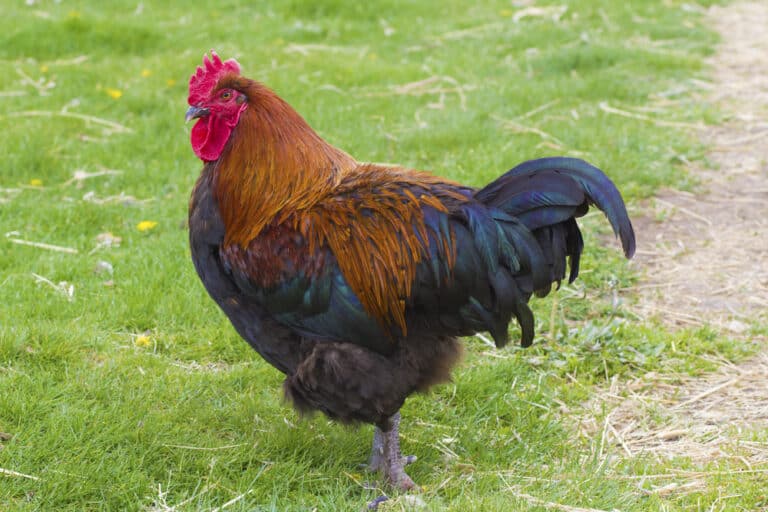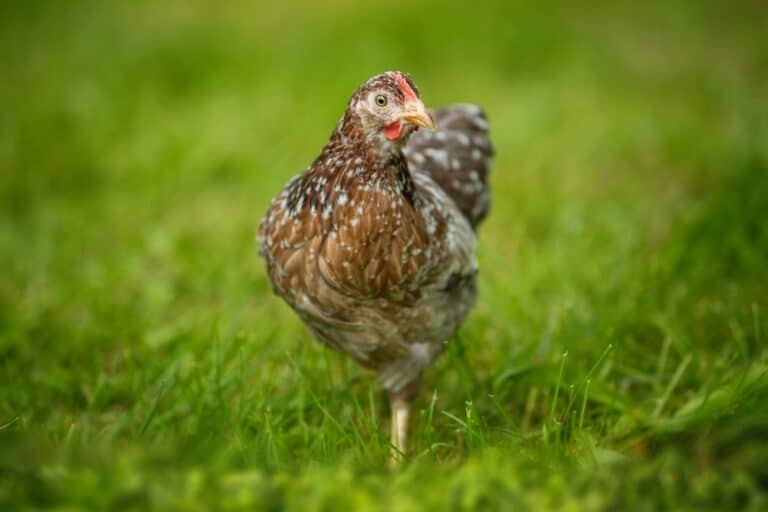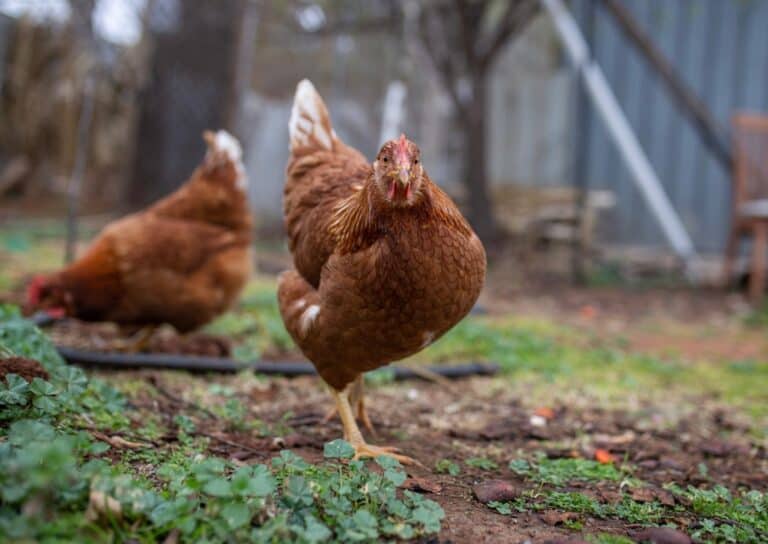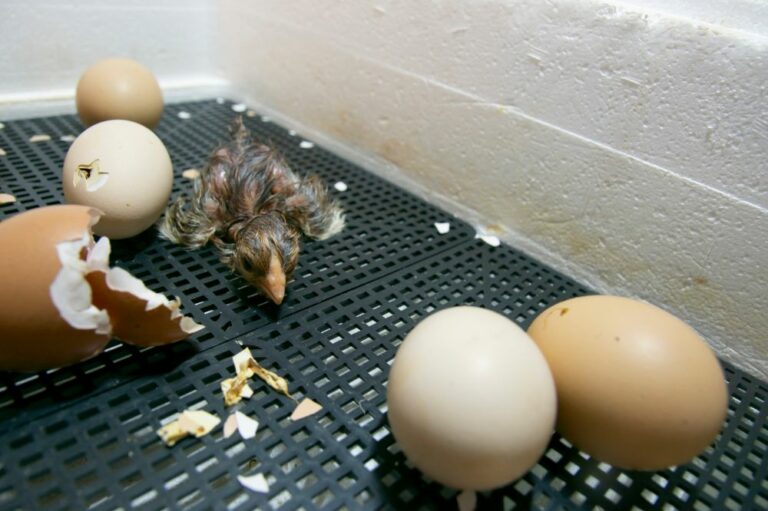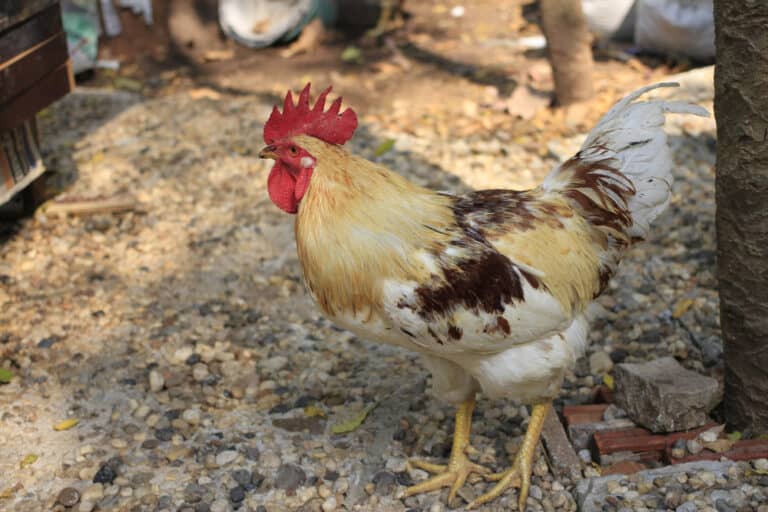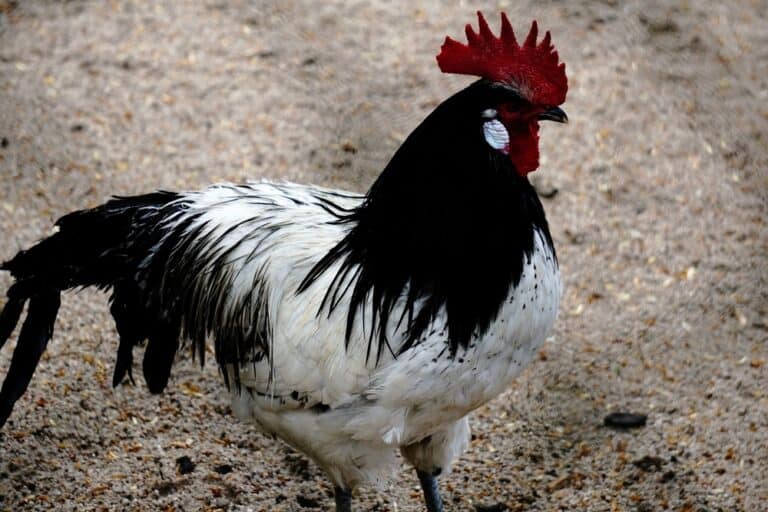Java chickens are a docile and easy-to-care American breed that originated in the Far East and came to North America in the early 19th century. Then, it was developed in the US from 1835 to 1850 for a dual purpose, egg and meat production.
You can find four varieties nowadays, but the American Poultry Association recognizes only black and mottled types. Interestingly, they lay eggs even in winter, much longer than other breeds. Since these chickens are calm, they are an excellent option for beginners and families with kids.
Java chicken |
|
| Origin | The US |
| Breed size | Large |
| Broodiness | High |
| Rarity | Rare to critical, particularly white variation |
| Climate tolerance | All climates |
| Care level | Easy |
| Lifespan | 5 to 8 years |
| Standard weight | Cock – 8 to 9.5 pounds (3.6 – 4.3 kg) Hen – 6.5 to 7.5 pounds (3 – 3.4 kg) |
| Bantam weight | Cock – 36 ounces (1 kg)Hen – 32 ounces (0.9 kg) |
| Feather color | Black, white, mottled, and auburn |
| Skin color | Yellow |
| Comb type | Single |
| Leg color | Yellow |
| Leg type | Clean, without feathers |
| Purpose | Eggs and meat (dual purpose), sometimes a pet |
| Egg size | Large |
| Egg color | Brown |
| Annual egg production | 150 to 180 |
| Sitter | yes |
| Flying ability | Can fly, typically when trying to escape from predators |
| Temperament | Calm, friendly, docile, quiet, and easily-handled |
| Beginner friendly | yes |
| Achieving full size | Over six months |
| Start of egg production | 5 to 6 months |
| Beginning of the meat harvest | 3 to 4 months |
Java History
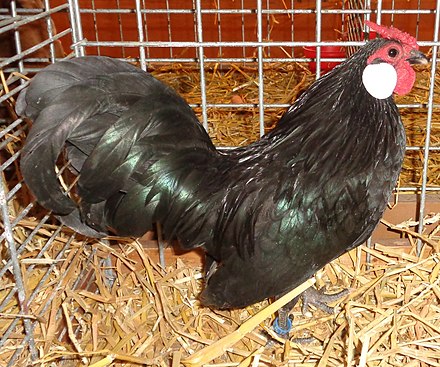
The Java chickens are the oldest American poultry breed besides the Dominique chicken. It was initially developed by combining a few unknown Asian chicken types.
Even though Java chickens’ ancestors didn’t originate on American soil, this breed is considered autochthonous. The documentation shows that they appeared in America between 1835 and 1850.
The APA recognized the breed in 1883, two years before it came to Britain in 1885. Its effect on other American chicken breeds is well-documented. For instance, this bloodline is a base for numerous modern ones, including:
Java chickens came to the brink of extinction by the end of the 20th century because of the increased popularity of other breeds. Nowadays, they are rare and on the Livestock Conservancy’s list as endangered breeds.
Java Chicken Traits
Java chickens come in standard and miniature versions. Both are suitable for free-range and provide large eggs and excellent meat without particular demands.
General characteristics
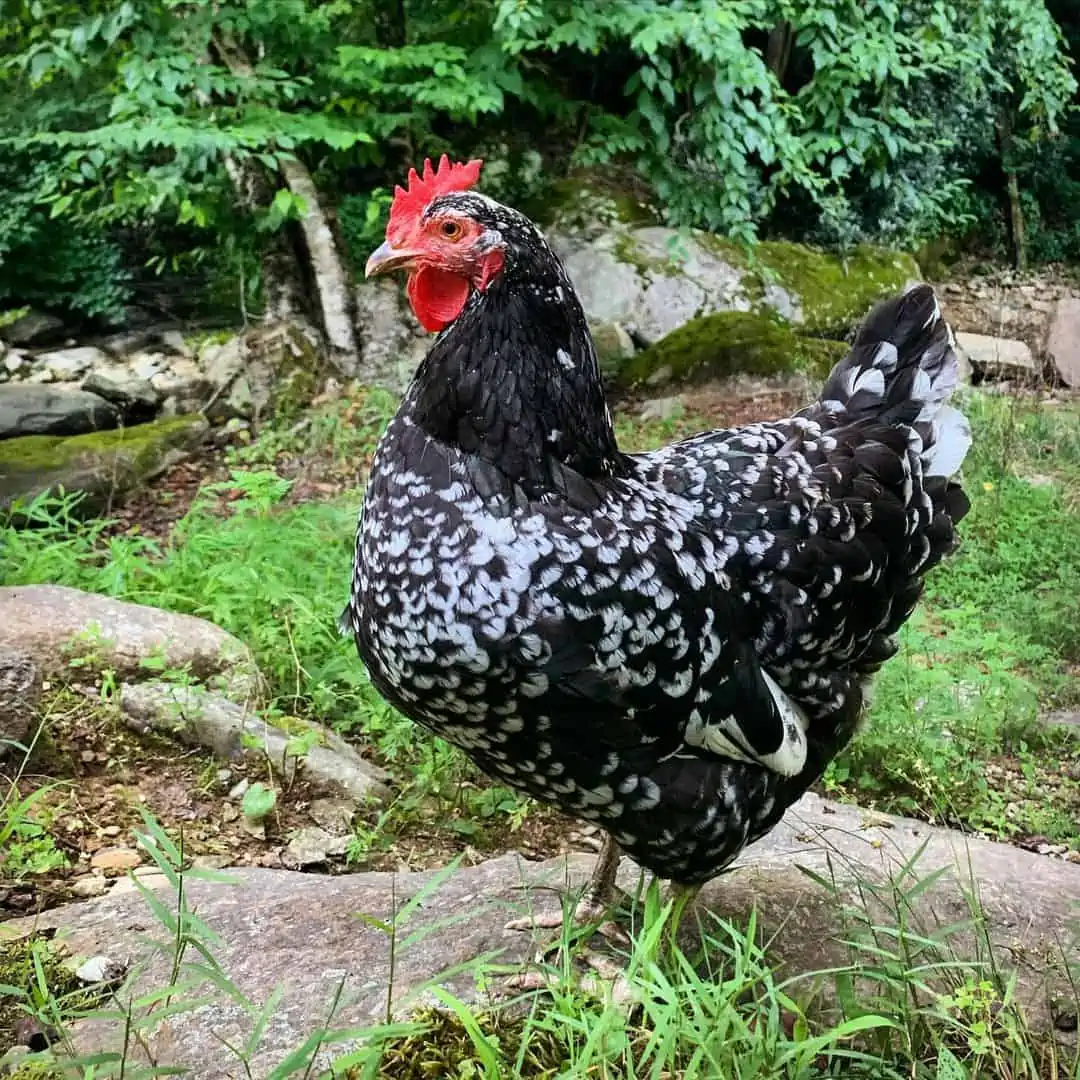
Java chickens are an excellent free-range, hardy breed that also bears confinement well. They are docile, easily handled, calm, and good foragers in any possible sense. They are also highly customizable and rarely aggressive, and you can keep them in different climates.
Even though those chickens can fly, they do it only when necessary. In most cases, they use their wings to escape from predators.
You can expect this practical poultry to be healthy, and the only thing you need to worry about is roosters’ combs susceptible to frostbite. Hens are hardy creatures that lay eggs even during the coldest winter months.
Appearance
Java chickens have distinguishably broad, rectangular bodies with specifically long and sloping backs. Their heads are up, while their breasts are full and deep with tight feathers. A black type comes with dark brown to black eyes, while they are reddish in others.
You can recognize single, medium-sized bright red combs that start above eyes and differently colored beaks, depending on the variety. Small-sized red earlobes and wattles make Java chickens a gorgeous American breed.
Their legs are of different shades, but the feet’ bottoms are always yellow with non-webbed and non-crested toes. Unlike most other breeds, their skin is yellow.
Weight
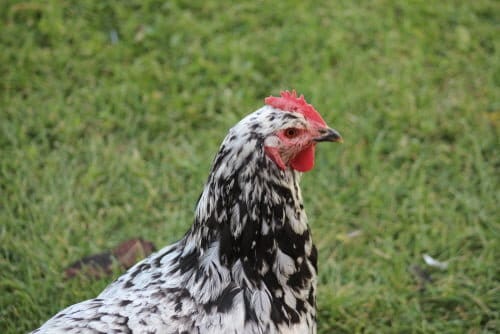
Java chickens come in two types, standard (large fowl) and bantam. Standard cocks weigh approximately 8 to 9.5 pounds (3.6 – 4.3 kg), while hens are a bit smaller. They typically reach 6.5 to 7.5 pounds (3 – 3.4 kg) in weight.
As expected, the bantam (miniature) type is smaller, with cock weighing only 36 ounces (1 kg). Hens are even less sizable, with a moderate weight of 32 ounces (0.9 kg).
Since Java is a heritage breed, you can expect chickens to grow more slowly than modern breeds. You should wait approximately half a year, sometimes longer, for your poultry to reach total weight.
Color
You can find three officially recognized Java chicken plumage varieties:
White – This rare variety inherits color as a recessive trait
Mottled – You can see that young chickens have black feathers with mottles of white. White predominates with each molt, and older chickens are more white than black.
Black – This variety comes with black feathers and a unique beetle-green sheen.
After APA rejected the white variation in 1910 because it resembled the White Plymouth Rock, chickens with this recessive trait almost disappeared. The white variety has been considered extinct since the 1950s, but some enthusiasts decided to save this old breed and started working on bringing it back.
Java chicken color |
|||
| Color | Eyes | Beak | Legs and toes |
| White | Reddish | Horn | Light-willow with yellow feet bottoms |
| Mottled | Reddish | Horn | Yellowish with a grayish leaden tinge and yellow feet bottoms |
| Black | Dark brown to black | Black | Dark-willow to black with yellow feet bottoms |
Besides these three types, there are also Java chickens with the auburn pattern that includes black mottles of orange. The American Poultry Association has never included it on the list since it is Black Java’s genetic mutation. It was a base for the Rhode Island Red chicken breed developed in the 19th century.
Behavior
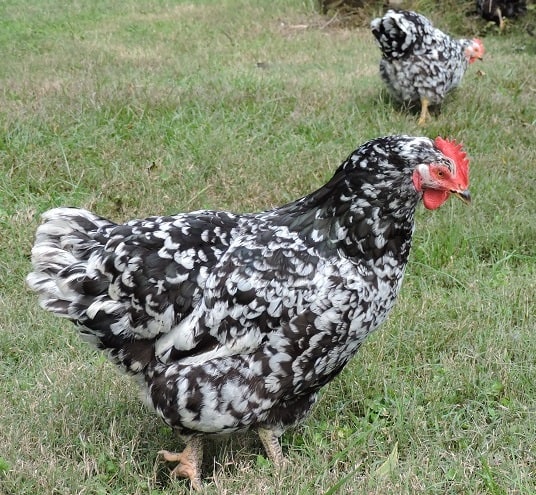
Java chickens are a docile and friendly breed, and you will often see them greeting the owner at the door. They will enjoy sitting on your lap and getting petted, so some consider them pets.
Thanks to their calmness and lack of aggression, they are a breed of choice when you have children, particularly toddlers. If you want chickens with a tendency to get along with others, Java is the best you can get.
Java hens are not particularly noisy but are dedicated and protective mothers. The nurturing period makes them less pleasant, and the best possible decision is to avoid touching and disturbing chicks.
You can count on roosters to crow in the morning or when someone enters their territory. They often attack kittens and garden snakes when dangerously close to their hens. They rarely attack humans, but you shouldn’t be pushy and disturb their flocks.
Purpose
These practical, dual-purpose chickens lay high-quality, large brown eggs regardless of the feather color. They begin egg production within five to six months, and you can expect them to produce approximately 150 to 180 eggs per year or about three to four per week.
Remember that laying chickens require a nutrition-dense diet, so hens need to eat a few times per day. Therefore, you should take care to make food always available.
Adding some calcium to the meal will help hens produce hard-shelled eggs. Interestingly, you can additionally increase egg production by keeping hens active, secure, and entertained.
These chickens are also suitable for meat if you prefer breeding them for this purpose. It has an unmatched flavor, but you should wait approximately 3 to 4 months for fully mature chicken before starting with consumption.
Health and Care
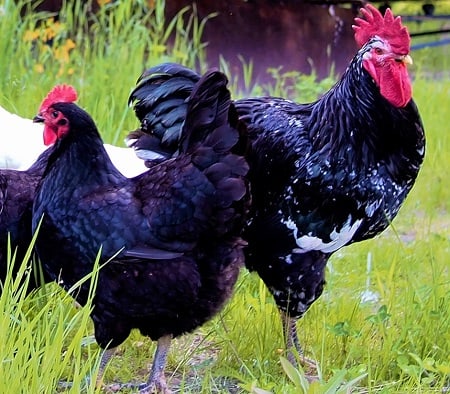
Java chickens are a hardy and robust breed with excellent immunity, and they rarely get ill during their 5 to 8 years-long lives. It is necessary to provide the required environment for your chickens to reduce possible health issues.
However, it is necessary to eliminate internal and external parasites from the coop and keep your poultry clean of these menaces. Remember that ticks, lice, and mites often cause premature chicken death. So, vaccinate your birds on time and be careful when noticing any problem on the skin and excessive feather shedding.
These fast runners can protect themselves in most situations. However, it is vital to organize the coop in a way to keep your Java chickens safe from hawks, snakes, dogs, and bobcats. White Javas are particularly endangered, so you should keep your eye on them if your area is predator-rich.
The coop needs to be well-built and dry to keep chickens protected from the lousy weather. Since these birds are sizable, you should provide about 4 sq ft (0.37 m2) per one, while 10 sr ft (1 m2) is ideal since they enjoy free space.
Java chickens are not particularly demanding, but you should provide quality food since free-range sometimes can’t fulfill all nutritional requirements. If your yard doesn’t offer all the necessary ingredients, you should provide supplementation to keep your birds healthy and well-nursed.
For instance, it is vital to offer additional food and healthy ingredients for laying hens to maximize egg production. Additionally, raising chicks requires a quality chick starter (grower) for at least 14 weeks before turning to regular food.
Summary
Java chickens are robust, naturally healthy, hardy, and docile backyard poultry that withstand all climates. The APA recognized it in 1883 as the second oldest American breed. Depending on the feather color, you can find four varieties, but all have yellow legs. You can raise them for eggs and meat, preserving this rare breed from extinction.

